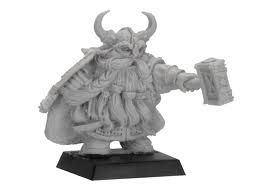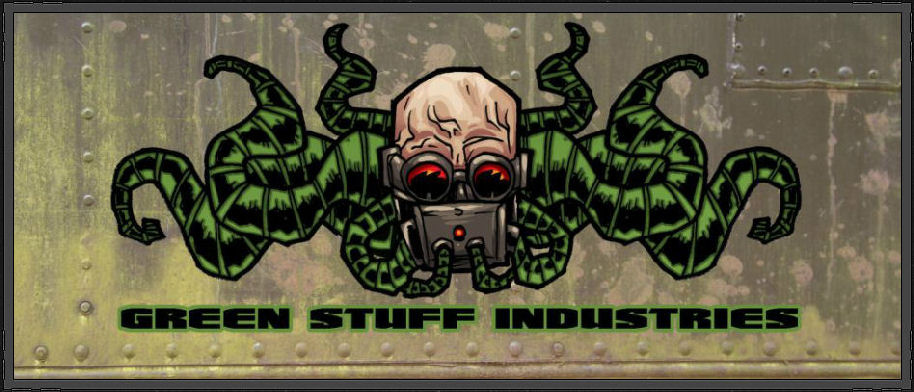The Miniature hobby is an extensive and living thing. No really, if you think about it, you (as a player) are not only coming up with what army you want to use but also, troop choices, background for your army, names, in some cases, for your captains and of course, color schemes. Now if you are a webrat , like I am, you are constantly checking out your favorite blogs and boards checking out the work of others to see what they’re doing, how it looks and usually, how they got to where they are. Most players or hobbyists are willing to share information with you, sometimes they even put together tutorials with how to this, that or the other. The one thing that I noticed gets omitted is how to start. I think part of it is the fact that the general opinion is trial and error. You have to figure out what works for you because simply taking someone’s word for it just doesn’t seem like enough. That doesn’t mean you can’t have some guideposts along the way.
I’ve been in the hobby for about 3 years now. In that time I have focused less on the game play aspect and more on the painting side of things. There are a couple of reasons for this but the most glaring is that I live in a part of the country where Table Top gaming just hasn’t taken off. So while the game mystifies me and intrigues me, it’s the miniatures themselves, the stories that they can tell, that truly draw my attention. I grew up on comics so those four color images of brightly outfitted superheroes molded my perception of things, including what appeals to a miniature.
To be frank one of the first goals I set for myself, perhaps a little too lofty looking back, was to learn to paint like a Games Workshop Sword winner. I didn’t realize at the time that it wasn’t just a matter of putting my mind to it, but also about learning my technique, figuring out what tools work best for me and practice, practice, practice.
With that entire preamble out of the way the focus of these sessions from me will be about getting you, the reader, to be more confident in what you are able to do and be willing to try things you haven’t. It’s not going to be easy, it’s not always going to be fun, and it will more than likely be time consuming if you are trying some of the methods, techniques and hints I give but I would like to feel that in the long run you will feel like reading these entries will help you appreciate the artistic side of the hobby.

I don’t have an outstanding pedigree that I can amaze you with. I haven’t won any awards; I haven’t participated with some of best of the best that our hobby has to offer. I am just like you, Joe Average, who enjoys getting his hands covered in paint and seeing a finished product. Keep that in mind as you read this and the series as it continues to develop. I’m not looking to remake the wheel, I’m looking to show you the tread on the wheel that maybe you missed the first time you looked at it.
Since I don’t play any games at the moment I have the luxury of being able to focus on what captures my eye and my imagination. There are several companies out there that have some amazing sculpts that just make the imagination race. However, the caution here is that while you may find some outstanding sculpts, not only should you find something that makes your mind spark, you should find something that is well within your current ability to paint.

One of the first purchases that I made was Dwarves for the simple reason that I felt that it would be impossible to muck it up, man was I wrong. My first painted Dwarf ended up looking like it was melting in the sun because I just slathered on paint and called it good. I think it took me half an hour to get it done; it wasn’t until I sat down with my second miniature that I started noticing the nooks and crannies that made each dwarf unique. The chainmail shirts, with each link being a separate part of the miniature, the different pouches around the middle, the beard itself and how you could actually see strands of hair and of course the weapons, which weren’t just cut and dry, they had skulls, writing and inscriptions on them. While it’s easy to put paint on those things and call it good, as a subculture we’ve learned about shading, shadows, light source, textures and just about anything else that “REAL” artists use.

Putting all of those small things together is what brings a figure up from ‘table top quality’ to ‘pro quality’. I mean, what is ‘pro quality’ honestly? Who decides that it’s pro quality? We do. I know of at least five painters that I consider pro quality painters who don’t sell their figures and don’t try to teach, they’ve mastered it for the benefit of having pride in what they put out for others to look at.
My focus is going to be getting you guys to feel like you can do pro quality work if given the chance, time, and practice to get there. We’re not going to be using airbrush techniques; it’s all going to be done by hand, even the undercoat. You need to appreciate the figures and the time it takes to make it stand out before you can move to another level. You gotta crawl before you can walk people, so get out your kneepads and get ready cause next time we’re going to look at some tools of the trade! Til then, keep your paint brushes clean and your palette ready.


No comments:
Post a Comment